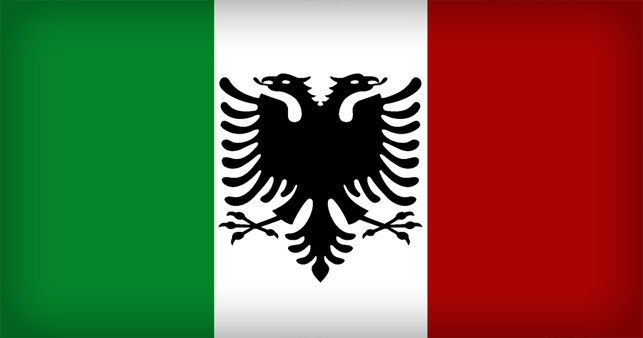Yesterday
Post death of the communism, Albanian-Italian relationship developed due to three important factors – regional instability, the internal crises followed by Albania’s conversion to democracy and the history of bilateral relationships. Speaking of the history, the Otranto Strait between Italy and Albania has been known to serve more as a bridge for communication than cooperation. Beginning with the Ottoman invasion, the natives of Albania migrating to Italy had created communities that influenced Albanian national consciousness while letting in Italian culture.
It is because of Albanian’s strong presence in Italy as well as historic presence of the Arbereshe community, that today, the two countries get to enjoy friendly, diplomatic relations. Frequent high-level contacts between both the governments can be seen. Besides, they are the members of multiple international organizations that include NATO and the Council of Europe. Significantly, the two countries share similar political views regarding the Balkans. Matteo Renzi, the Italian Prime Minister, recently visited Tirana, where he confirmed Albania as Italy’s closest partner.
Surprisingly, there is huge similarity in historical and cultural legacy between both of these countries, aiding their relations greatly. Furthermore, Albania is home to almost twenty thousand Italian immigrants and five thousand Italian indigenous communities. Formal relations between Albania and Italy began in 1912 as the Italian Kingdom came out in support of the Albanian Declaration of Independence.
It is during the World War I that the Italian protectorate over Albania to ensure de jure independent Albania. The year 1920, has seen a series of battles between the mighty Italian forces that garrisoned throughout the Vlore region. And later during the period of monarchy, Italy became the nearest ally of Albania, confirming a de jure protectorate. Back then, Italian was taught as the second language in the schools. Moreover, the economy was greatly dependent on the loans as well as the financial aid given by Italy.
Two essential agreements were signed; the first was the right to establish a national bank, whereas the other was approval of the SVEA for development of Albanian economy. It was then the National Bank of Albania was institutionalized with Italian capital. Similarly, Lek, Albanian currency was introduced.
 In 1939, Albania was invaded by Mussolini’s troops. As King Zog was sent to exile, the country became a part of Italy that operated as a separate kingdom. Soon after Italy’s capitulation, Nazi Germany made not delay in occupying Albania and by the end of the World War II, Italy and Albania’s relationship was interrupted. It was after the Fall of Communism, relation between the two countries was re-established.
In 1939, Albania was invaded by Mussolini’s troops. As King Zog was sent to exile, the country became a part of Italy that operated as a separate kingdom. Soon after Italy’s capitulation, Nazi Germany made not delay in occupying Albania and by the end of the World War II, Italy and Albania’s relationship was interrupted. It was after the Fall of Communism, relation between the two countries was re-established.
From 1997, Italy established a strict security on the Adriatic to curb Albanian immigration while aiding the economy of the country during this time of transition. Additionally, Italy helped in restoration of Albanian law and order after 1997 rebellion.
Today
Presently, Italy is the major trading partner of Albania, counting 42.8% of the exports and 33.4% imports. Equally, it is one of the largest donors for Albania and supporter of the integration of the Republic of Albania. The countries share same maritime border. By now Italy has financed many projects, including judicial, energy, tourism and political.

Silvio Berlusconi
In 2008, Silvio Berlusconi, the then Prime Minister visited Tirana and met PM Sali Berisha, his counterpart. Following the meeting, an agreement was signed concerning the construction of the two power plants that are expected to boost Albania’s economy. On 4th March 2014, another meeting was held in Tirana where Giorgio Napolitano, Italy’s President met the Prime Minister, the Speaker of the Parliament and the Italian community living in Tirana. They signed an agreement to promote interconnection as well as integration of electric energy alongside natural gas systems in both the countries. This was quite an important decision as the natural gas was to be transported from Greece through Albania and then to the Adriatic Sea to finally reach Italy and Western Europe.
Yet another important agreement was signed on 20th December 2014, between the two countries in recognition of pensions. During this meet in Tirana, Matteo Renzi, the Italian Prime Minister confirmed his support for integration of Albania in European Union. In 2016, Laura Boldrini, the President of the Chamber of Deputies of Italy, went to Tirana to support the same cause plus to speak in the favour of the judicial reform passed by the Parliament, recently.

